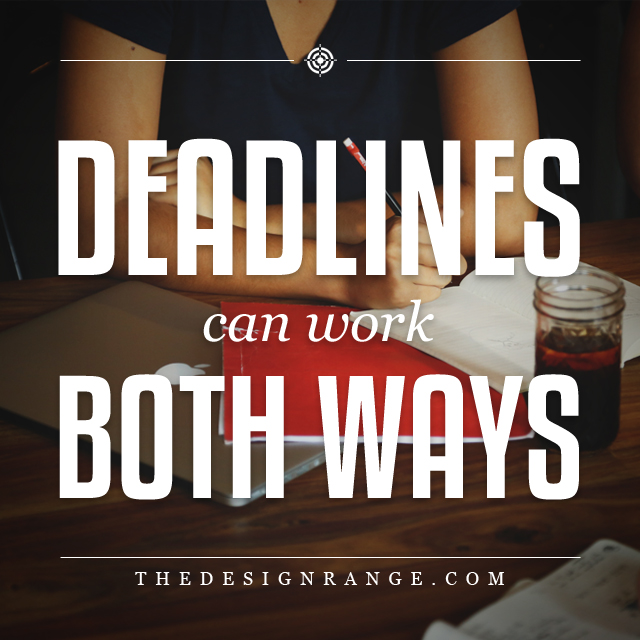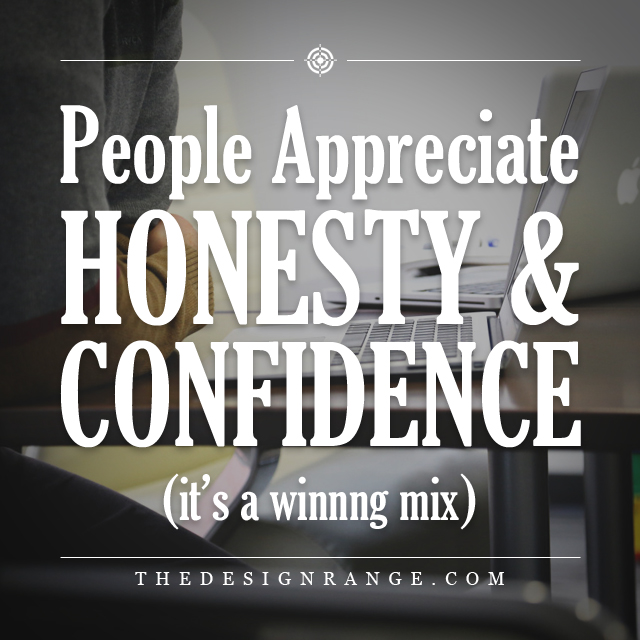What’s the Most Productive Way to Schedule Your Work Flow?
Comments Off on What’s the Most Productive Way to Schedule Your Work Flow?I’m having a great work week right now. I’m snapping necks and cashing cheques. I’m getting shit done.
We all love weeks like this, weeks where we’re so crazy productive, where we manage to tick off whole projects ahead of time, where we naturally wake up early and dive straight back into the mix every day with no down time.
I’m in that week right now.
Yesterday I sent a client three emails, all going through the work I had done that day. I ended up sending three because that’s how many scheduled days work I’d got through. Every time I thought I was done, I just kept going.
So today when I sat down to write an article I decided that I needed to get the secret of this amazing work flow out of me and posted up on the Design Range for all you lovely people.
Initially I started writing about the virtues of concentrating on a single project and then just steaming through it. Surely that was the secret? But the more I thought about it, the more I realised I’d just been lucky, but I’ll come back to that.
First let me tell you about the two strategies I have for scheduling my work flow; stacking and spreading.
Stacking
Stacking is what I’ve been doing this week, and what I was initially going to concentrate this entire article on. When you stack your projects you put one before the other, like pages in a book; you can’t move onto the next page until you’re done with this one.
In terms of work flow this means that once you start a project, you don’t do anything else until that project is done, wrapped up and invoiced.
When it works, it’s amazing. Stacking means you get to fully concentrate on just one thing giving it 100% of your attention with no distractions. It’s like running downhill; the further you travel, the faster you go, until you’re at a point where you can’t even stop.
I never work as quickly and efficiently as when I’m stacking my work well; my productivity literally triples.
The down side to stacking is that you’re not 100% in charge of your work flow. There’s no project that doesn’t need constant input from the client, or sometimes even from other designers that you might be collaborating with.
Having to stop for client feedback, or for assets you need them to provide can absolutely kill your rhythm and all that momentum you gathered is just gone in an instant. Even worse, the client feedback can sometimes put you on a tangent to where you expected the project to go, and suddenly that clear vision you were steaming towards is no longer the goal, and you need to start over.
Spreading
Spreading is how I normally work, and how I imagine a lot of you guys work as well. You spread your time out amongst several projects that you’re working on simultaneously.
When you send off for feedback from a client on one project, you immediately switch and start working on another, making sure that you have absolutely no downtime, even if that first client takes a couple of days to get back to you.
Whilst making sure you’re not wasting a single second of your time is nice, spreading doesn’t make for the most productive workflow as you’re constantly stopping and starting with various projects. It’s difficult to get any traction, and whilst you are steadily making progress across several fronts, it’s not particularly quick as it takes an hour or two each time you switch just to reacquaint yourself with the nuances of each project.
Spreading also isn’t the ideal way to wow a client. Rather than you blasting a project and the client seeing it come to life before their eyes, instead they’re treated to very incremental updates over weeks and months (although if you’re waiting on their feedback, it’s nothing they can complain about).
Engineering a Stack
The reason my week has been going so well isn’t to do with me or my workflow at all. It was because this week I’ve had amazing clients.
This week I’ve been lucky.
As soon as I’ve fired off an email asking for feedback, I’ve had an answer within minuets. My momentum hasn’t had a chance to dip at all. My clients have allowed me to stack efficiently.
But what if it wasn’t down to luck though? What if there was a way to engineer a stack? A way to make sure your clients hit you up with feedback right away, and guarantee that you have all the content and assets you need from them?
Client Deadlines
As designers we’re used to having to work to deadlines. Moments set in time by which all work must be completed lest Satan himself be loosed from his fiery pit to wreak havoc upon the earth… or at least that’s what my clients tell me.

But deadlines can work both ways. What if you set your client deadlines? Gave them time limits on getting feedback to you, or providing that copy that you desperately need?
I’m not saying that if they miss one of your deadlines you bill them, but how about you keep a tally and add that to the deadline they’ve set for you? If a client knew that every time they slacked off on getting you what you needed it was going to push their project back (which it is anyway!) I’m sure they’d soon pull their socks up and crack on with things!
Client deadlines should be something that’s discussed up front during the contract stage. Here you can outline exactly what you need from the client to be at your most effective.
Bill by Time Blocks
For some clients, time alone isn’t enough motivation to shake them out of apathy, some of them need an extra nudge, and nothing works better for getting people moving like the knowledge that they’re wasting their own money.
Instead of billing by the hour, try billing for the hour. It’s a subtle change, but it’s effects are huge.
When a client hires you, you tell them that you’re going to dedicate a set block of time to their project. You’re going to bill a set amount for that block of time and do as much work in it as you can.
The client is paying for your time. If you’re spending that time having to wait on them for feedback, or images, or copy, then you’re still spending that time, and the client should pay for it.
This way you put the ball firmly in their court. The longer they spend dragging their feet, the more it’s going to cost them overall.
Although this admittedly doesn’t absolutely guarantee you a perfect stacking work flow, it at least means that you’re getting paid for your down time and it also allows you to block out your work weeks in advance with a steady income.
A word of warning though, (and I’m going to tackle this a bit more in a later article, so for now I’ll be brief) as glorious as this approach sounds, it can actually be a bit counter productive. Think of this – the poorer your work flow, the slower you work. The slower you work, the more a client pays. The better your work flow, the faster you work. The faster you work, the less a client pays.
In essence, you’re being paid less for being more productive… just a little something to bear in mind.


